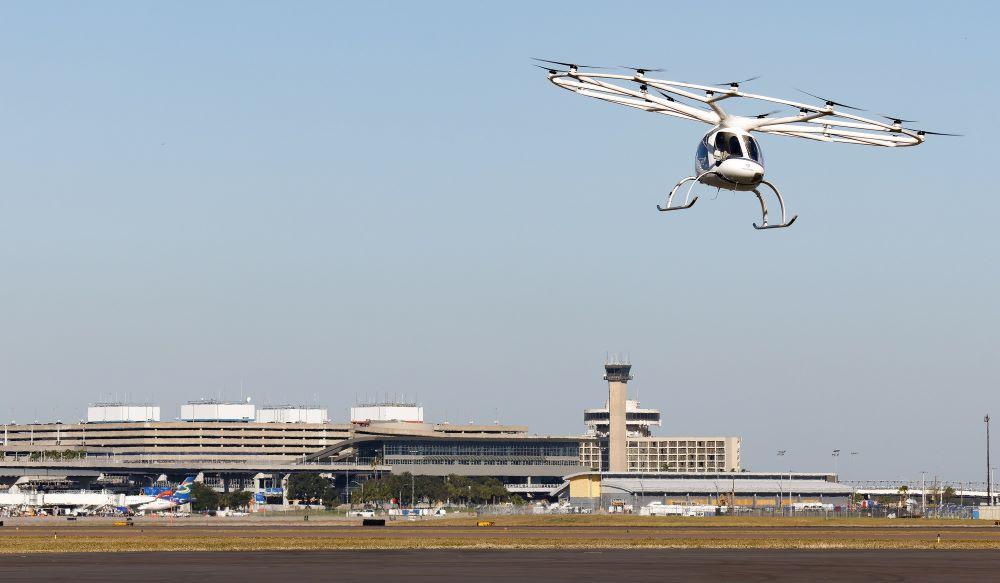
Volocopter conducts downwash/outwash flight tests for the FAA while visiting Tampa International Airport in Florida.
Credit: Volcopter
When the FAA released draft updated engineering guidelines for vertiports in September 2024, it introduced the requirement for a caution area to provide protection from the high wind velocities produced by the propellers of electric air taxis during vertical takeoffs and landings. The introduction...
Subscription Required
FAA Underlines eVTOL Downwash Challenge For Vertiport Design is published in Advanced Air Mobility Report, an Aviation Week Intelligence Network (AWIN) Market Briefing and is included with your AWIN Premium membership.
Already a member of AWIN or subscribe to Advanced Air Mobility through your company? Login with your existing email and password
Not a member? Learn how to access the market intelligence and data you need to stay abreast of what's happening in the air transport community.





